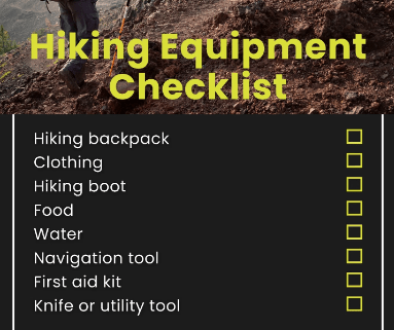Energy Foods for Hiking: Fuel Your Adventure Like a Pro
Energy Foods for Hiking – The Trail to Peak Performance Starts in Your Pack
Let’s cut to the chase—that mountain isn’t going to climb itself, and your body isn’t running on empty. Whether you’re tackling a punishing summit or enjoying a casual day hike, what you’re packing in your food bag can make or break your adventure. The right energy foods for hiking aren’t just calories—they’re your insurance policy against bonking, cramping, and that miserable feeling when your legs turn to jelly halfway up the trail.
You don’t need a nutrition degree to eat right on the trail. But you do need a strategy. Your body burns through fuel differently when you’re hiking than during your regular 9-to-5, and those servo snacks aren’t doing you any favours when you’re 5 kilometres from the trailhead.
The Science Behind Your Hungry Hiking Body
When you hit the trail, your body becomes a calorie-burning machine. We’re talking serious numbers here, hikers can burn upwards of 5,000 calories daily, which is basically a competitive swimmer’s diet. Your muscles are working overtime, your metabolism is revved up, and your body’s switching between energy systems faster than you can say “trail mix.”
Here’s what’s really happening under the hood:
- Carbs: Your primary energy source, broken down into glucose for immediate power. Think of them as your trail’s high-octane fuel.
- Fats: Your backup generator that kicks in for sustained energy when carbs start running low.
- Proteins: Not your main energy source, but crucial for keeping your muscles from cannibalising themselves during long hikes.
Your body preferentially burns carbs during higher-intensity sections (like that brutal uphill scramble), then gradually shifts to burning more fat during steady, moderate output. It’s a beautiful system—if you feed it right.
Macro Balance: Your Performance Equation
The perfect hiking plate isn’t just about throwing together whatever’s convenient. There’s actual science behind what works best, and the research points to a pretty specific balance:
- 50-60% Carbohydrates: Your trail powerhouse
- 20-30% Fats: Your long-burning fuel reserve
- 15-20% Proteins: Your muscle maintenance crew
This isn’t just theoretical—it’s the difference between finishing strong and dragging yourself to the trailhead. But here’s where it gets interesting: these ratios shift depending on your hike.
Energy Foods for Hiking – Day Hike vs. Multi-Day Trek: Shifting Your Fuel Mix
| Hike Type | Carb % | Fat % | Protein % | Why It Works |
| Day Hike | 55-60% | 20-25% | 15-20% | Higher carbs for immediate energy, moderate fat for sustained power |
| Multi-Day Trek | 45-50% | 30-35% | 15-20% | Higher fat content for extended energy reserves, steady carbs for daily replenishment |
The longer you’re out, the more your body adapts to using fat as fuel. Smart hikers leverage this by gradually increasing fat intake on longer expeditions. Your body becomes more efficient at fat oxidation, giving you more mileage per calorie—exactly what you need when you’re carrying everything on your back.
Timing Is Everything: Strategic Fuelling Windows
Ever notice how some hikers seem to maintain steady energy all day while others ride the hunger rollercoaster? The secret isn’t just what they eat, it’s when they eat it.
Pre-Hike: Foundation Building
Research shows that a solid breakfast 2-3 hours before hitting the trail sets you up for success. This isn’t the time for a quick muesli bar. You need substantial, slow-burning fuel:
- Porridge loaded with nuts and dried fruit
- Wholegrain toast topped with avocado and eggs
- Quinoa breakfast bowl with nut butter and banana
These combinations prime your glycogen stores without causing digestive issues. If you’re starting at dawn, scale back to a smaller snack 30 minutes before—maybe a banana with almond butter or half a turkey sandwich.
During Your Hike: The 60-90 Minute Rule
The pros don’t wait until they’re hungry. They follow a proactive fuelling schedule. Eating small amounts every 60-90 minutes maintains blood sugar stability and prevents the dreaded bonk.
Your mid-hike nutrition strategy should look something like:
Hour 1: Something fast-acting with simple carbs (25g) like energy chews or a small handful of dried fruit
Hour 3: Complex carbs + protein + fat combo like a wrap with turkey and avocado
Hour 5: Balanced energy like trail mix with nuts, seeds, dried fruit and a bit of dark chocolate
This staggered approach keeps your energy steady without overloading your digestive system when blood is prioritised for your working muscles.
Post-Hike: The Golden Hour
The 60 minutes after your hike might be the most important nutritional window of all. This is when your body’s primed for recovery, and what you eat directly impacts how you’ll feel tomorrow.
Aim for a 2:1 or 1:1 ratio of carbs to protein. This isn’t bro-science—it’s proven to accelerate glycogen resynthesis and repair damaged muscle tissue. Some perfect post-hike meals include:
- Dehydrated quinoa with chicken (for bushwalkers)
- Lentil stew with rice (make-ahead and reheat)
- Protein shake with banana and peanut butter (for convenience)
Miss this window, and you’re setting yourself up for delayed recovery and increased soreness.
Practical Energy Foods for Hiking That Actually Works
Theory’s great, but what should actually go in your pack? Let’s break it down by hike type:
Day Hike Heroes: Fresh and Functional
When you’re only out for hours, not days, you can prioritise palatability and nutrition over shelf-stability:
- Fresh fruit: Nature’s perfect package—bananas, apples, and oranges provide quick carbs plus hydration
- Sandwiches: Turkey, hummus, or nut butter on wholegrain bread gives balanced macros
- Hard-boiled eggs: Portable protein bombs that require zero preparation on the trail
- Greek yoghurt with muesli: If you’re packing a small esky, this protein-carb combo is unbeatable
These options give you nutrient density without sacrificing taste. You’re not in survival mode on a day hike, you’re optimising for performance and enjoyment.
Multi-Day Magic: Lightweight and Long-Lasting
When weight matters and refrigeration doesn’t exist, your strategy shifts. Hikers need calories that won’t weigh them down:
- Dehydrated meals: Lentil curry, mashed potatoes with bacon bits, pasta primavera
- Jerky and biltong: Protein that keeps forever and requires zero preparation
- Nut butter packets: Single-serve calorie bombs that pair with anything
- Instant porridge: The breakfast that never fails, easily enhanced with nuts and dried fruit
The metrics to focus on: calories per gram and preparation simplicity. Your food should work for you, not the other way around.
High-Performance Add-Ons: The Secret Weapons
Some hiking foods transcend categories—they’re the specialised tools that elevate your nutrition game:
- Electrolyte tablets: Drop one in your water when sweating heavily to prevent hyponatremia (dangerous low sodium)
- Energy gels: Reserved for steep ascents when you need glucose immediately
- Chocolate-covered nuts: The perfect high-altitude snack that combats appetite suppression
- Instant miso soup: Savoury, satisfying, and loaded with sodium when your body needs it most
These aren’t everyday staples—they’re situation-specific solutions for serious hikers who understand that different trail conditions demand different nutritional approaches.
Hydration: The Performance Multiplier
Let’s get something straight—even perfect food choices can’t compensate for poor hydration. Dehydration tanks your performance by up to 10% with just 2-3% fluid loss. That’s the difference between enjoying the summit and questioning your life choices. Related Post.
Your hydration playbook should include:
- Pre-hydrating: 500-750ml of water 2 hours before your hike
- Sipping schedule: 150-300ml every 20 minutes during activity
- Electrolyte integration: Adding electrolytes to water on hot days or hikes longer than 2 hours, for me this is a must. This approach will honestly make your hydration a lot easier and will avoid you from cramping. SALT + MAGNESSIUM + POTTASIUM
Water isn’t just about quenching thirst, it’s the medium for every metabolic process that keeps you moving forward. Treat it with the same strategic approach as your food.
Rookie Mistakes That Tank Your Trail Performance
Even experienced hikers make these nutritional blunders. Don’t be that person:
The Sugar Roller Coaster
Loading up on lollies and energy gels might feel great for 20 minutes, but the crash that follows is brutal. These simple carbs cause dramatic blood sugar spikes and inevitable crashes. The fix? Balance any simple carbs with complex sources—pair that energy gel with a handful of nuts or a piece of jerky.
The “I’ll Eat When I’m Hungry” Approach
By the time hunger hits on the trail, you’re already behind. Your glycogen stores are depleting, and your performance is suffering. The solution is proactive fuelling and eating on a schedule rather than waiting for hunger signals that often come too late.
Forgetting Post-Hike Recovery
That beer at the trailhead feels well-deserved, but it’s not doing your recovery any favours if it’s your only post-hike consumption. Skipping proper recovery nutrition increases injury risk and delays muscle repair. Keep a recovery shake or pre-made meal in your car for immediate post-hike nutrition.
Elevation Effects: Adjusting Your Strategy
The game changes when you go up. At higher elevations, your body’s under different stresses:
- Appetite naturally suppresses (yet caloric needs increase)
- Digestion slows down
- Your body preferentially burns carbs over fat
The solution? Increase your carbohydrate intake to up to 70% of calories and focus on calorie-dense, easily digestible foods. This isn’t the time for complex, fibre-heavy meals—your body needs simple, efficient fuel.
Your Personalised Trail Nutrition Plan
One size doesn’t fit all when it comes to hiking nutrition. Your perfect plan depends on:
- Your body size and composition
- The intensity and duration of your hike
- Weather conditions and elevation
- Your personal dietary preferences and restrictions
Start with the guidelines here, then fine-tune based on your experiences. The best nutrition plan is one you’ll actually follow and one that leaves you feeling strong from trailhead to summit and back.
Beyond the Basics: Levelling Up Your Trail Nutrition
Once you’ve mastered the fundamentals, consider these advanced strategies:
- Carb loading: For multi-day trips, increasing carbohydrate intake for 2-3 days before departure maximises glycogen storage
- Strategic fasting: Some experienced hikers intentionally train their bodies to better utilise fat by occasionally hiking in a fasted state (not recommended for beginners)
- Metabolic efficiency training: Training at specific heart rate zones can improve your body’s ability to use fat as fuel during moderate-intensity hiking
These approaches aren’t necessary for casual hikers but can provide an edge for those pushing their limits on challenging terrain.
Conclusion: Trail-Tested, Science-Backed Performance – Energy Foods For Hiking
Energy foods for hiking nutrition isn’t about diet culture or trendy superfoods. It’s about understanding how your body works and giving it exactly what it needs, when it needs it. The mountains don’t care about your excuses, but they do reward those who prepare.
The right energy food strategy transforms hiking from a test of endurance into a celebration of what your body can accomplish. It’s the difference between surviving your hike and thriving on the trail.
What fuelling strategies have worked best for your adventures? Have you found your perfect trail food combination? The journey to optimal hiking nutrition is as personal as your choice of trails and just as rewarding to explore.
Disclaimer: Consult a healthcare professional before making significant dietary changes.




